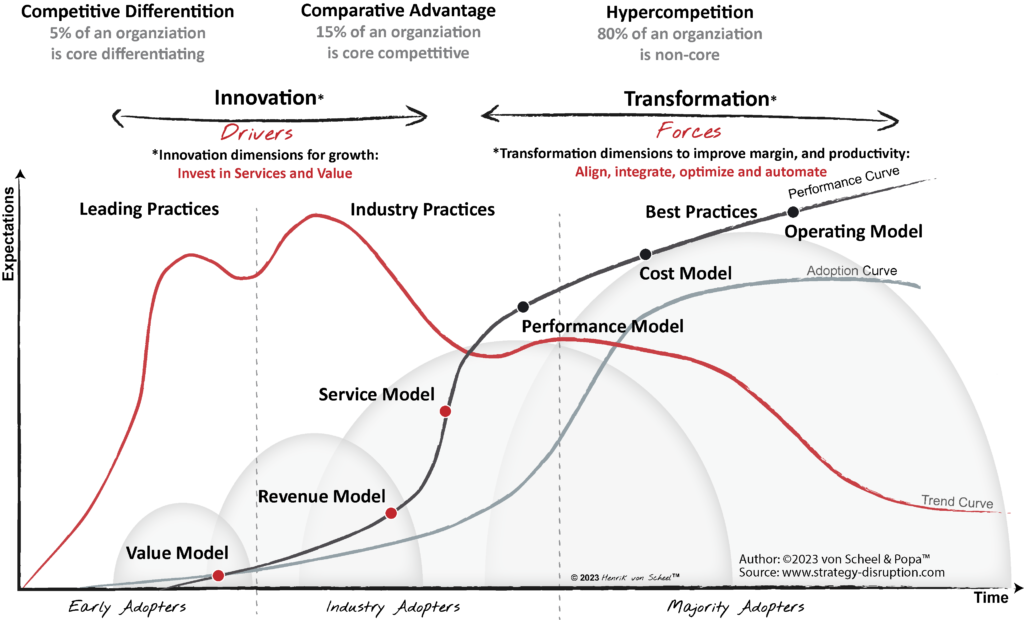The secret of the Outperformers (80-15-5 rule)

A company must be able to create a defendable position in order to cope successfully with competitive forces and generate superior profitability.
Superior performance can be achieved through cost leadership, differentiation or focus.
Cost Advantage with cost leadership involves becoming the lowest cost producer by pursuing strategies such as lower cost of resource and production, economies of scale, automation, know-how, quantity, supply chain efficiency, etc.
Differentiation Advantage means being unique base on your capabilities to deliver, which is widely value-based by buyers. Differentiation can be achieved on the basis of superior service, and products that give a better value experience.
Focus means being the best in a carefully chosen product, market, customer, or partnership.
These are some of the basic introductions to designing competitive strategies. Companies should pursue one of these strategies and take care not to get stuck in the middle. But care must also be taken to maintain a proper balance between cost leadership and differentiation.
Thus, a cost leader should not be seen to be offering distinctly inferior products compared to rivals who are competing on the basis of differentiation. Similarly, a differentiator cannot afford to have a very high-cost structure. The costs should not exceed the price premium it receives from the buyers.
The sustainability of competitive strategies depends on three conditions.
The first is the particular source of the advantage. There is a hierarchy of sources of competitive advantage in terms of sustainability. Lower-order advantages, such as low labor costs or cheap raw materials are relatively easy to imitate. Higher-order advantages, such as proprietary process technology, product differentiation, brand reputation, and customer relationships are more durable. Higher-order advantages involve more advanced skills and capabilities such as specialized and highly trained personnel, internal technical capability, and often close relationships with leading customers. Such advantages also demand sustained and cumulative investment in physical facilities and specialized intangible assets.
The second determinant of sustainability is the number of distinct sources of advantage a firm possesses. If there is only one advantage, competitors can more easily nullify this advantage. Firms that sustain leadership over time, tend to proliferate advantages throughout the value chain.
The third, and the most important, basis for sustainability is constant improvement and upgrading. A firm must keep creating new advantages at least as fast as competitors can replicate existing ones. The firm must improve its performance relentlessly against its existing advantages. This makes it more difficult for competitors to nullify them.
Engage
If you’d like to get in touch with Henrik about speaking at your event, working with your organization, please contact us on the email below.
